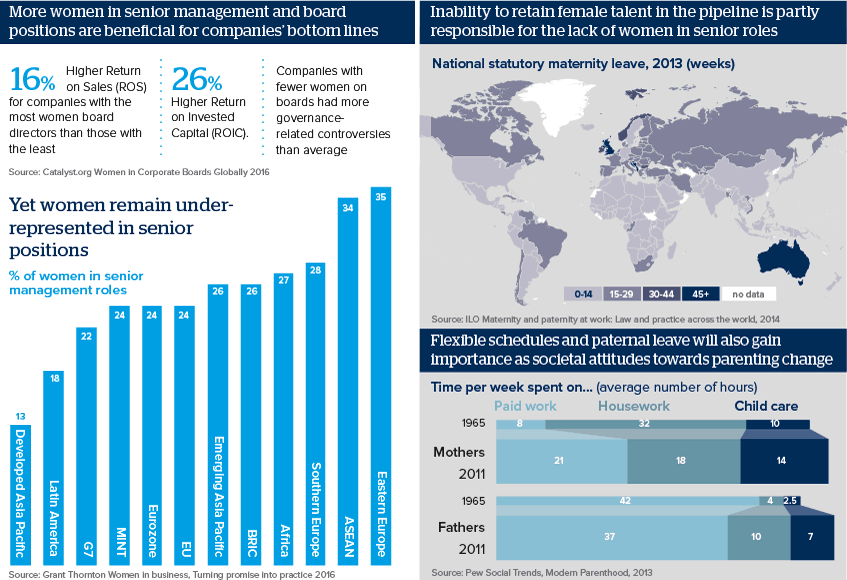Parental leave will be key in retaining global talent
Societal norms towards parental roles are shifting, especially among younger generations
Source: ILO Women in Business and Management, ILO Women at Work 2016 Trends, ILO Maternity and paternity at work: Law and practice across the world; Catalyst.org Women in Corporate Boards Globally 2016; Grant Thornton Women in business; Pew Social Trends
Outlook
A series of studies in the past decade have shown that more women in managerial and leadership positions make companies more profitable and innovative. Yet despite legislation and measures to increase the proportion of women in senior roles, they remain largely underrepresented: the highest proportion is 35% in Eastern Europe.
There are several reasons for this disparity: cultural expectations of the roles of men and women, inflexible work arrangements, long working hours, and failure to bring women back to work after childbirth are among some of them. The latter is especially important as little or no maternity leave means that women quit their jobs to have children, and take longer to get back into the workforce.
Yet even with longer maternity leave, when women get back to work, the need for flexible hours of part-time work leaves them with lower-status jobs and reduced incomes.
Impacts
- Societal expectations in the West are shifting the role of men towards greater participation with regards to parenthood.
- Employers could use flexible working hours to balance family and work obligations in order to retain skilled workers in developed countries.
- Career gaps could become an attractive tool in retaining talent -- both male and female.
See also
- Latin America's management gender parity will be slow - May 31, 2018
- More jobs for Middle East women could boost growth - Apr 11, 2018
- UK gender gap report underscores unequal playing field - Apr 6, 2018
- Growing gender parity will aid global growth prospects - Aug 4, 2017
- More graphic analysis
